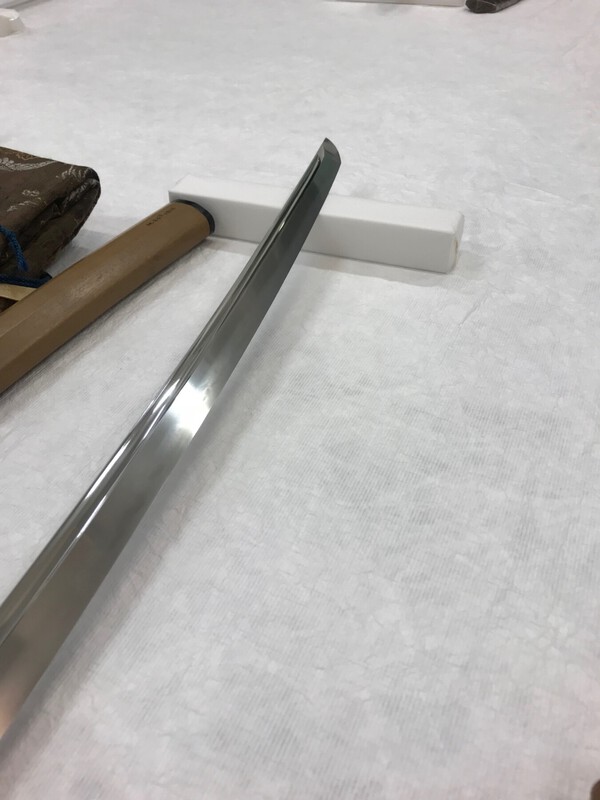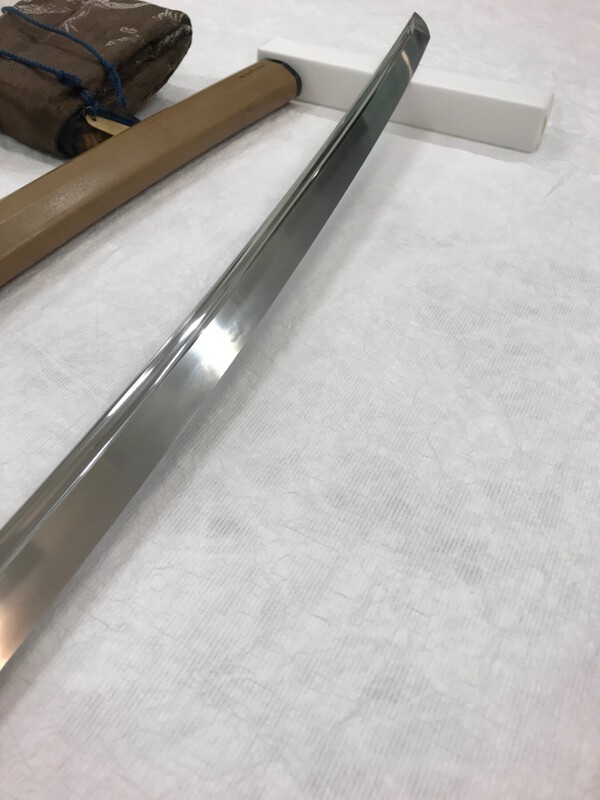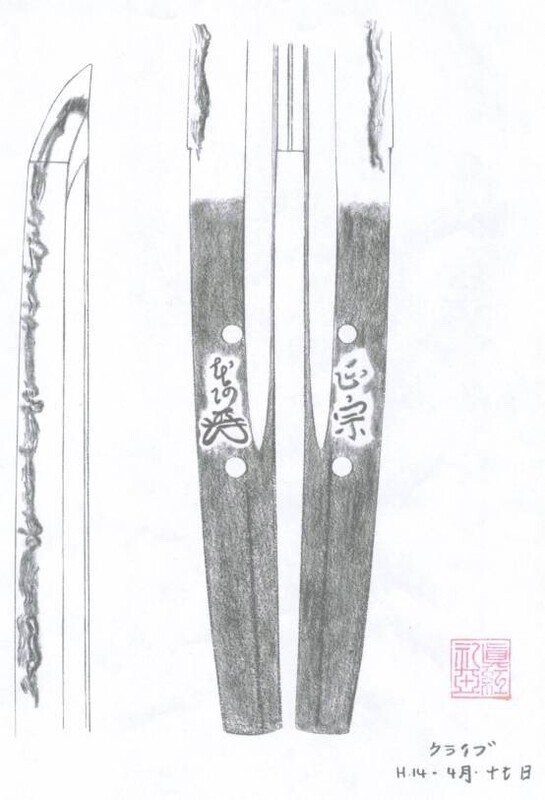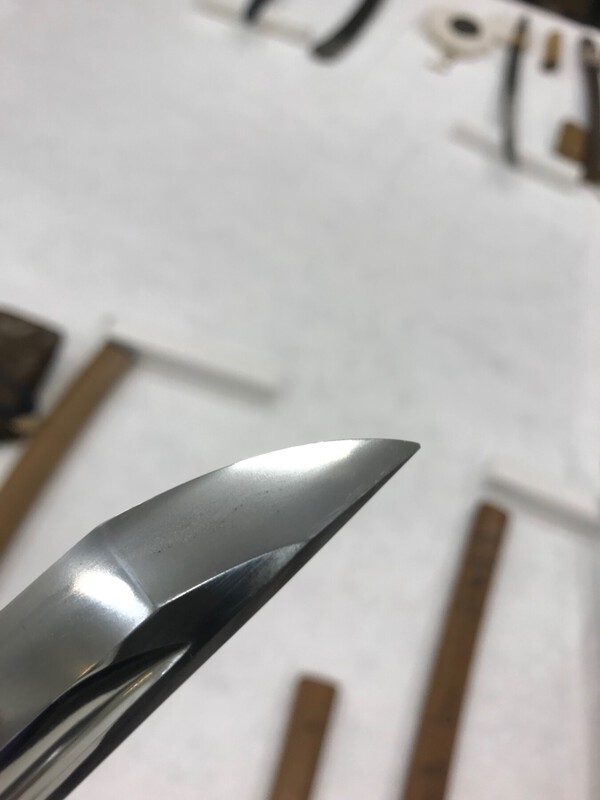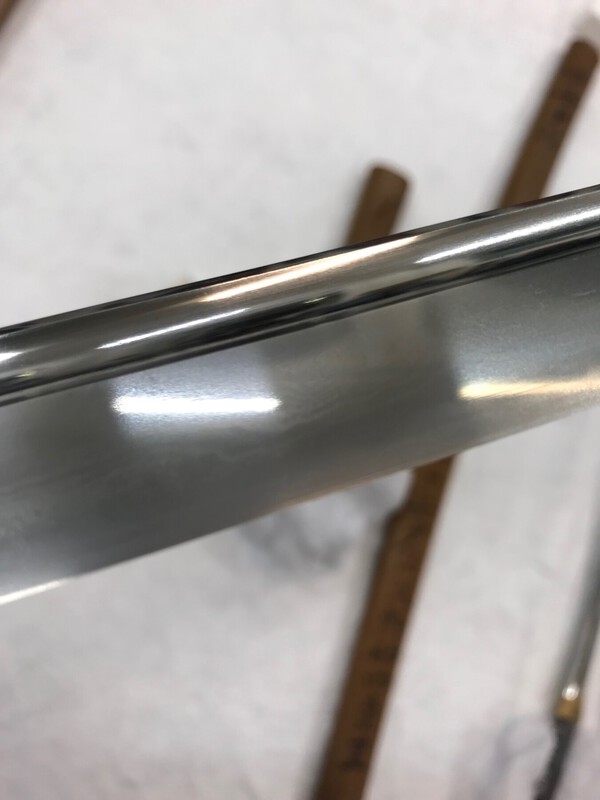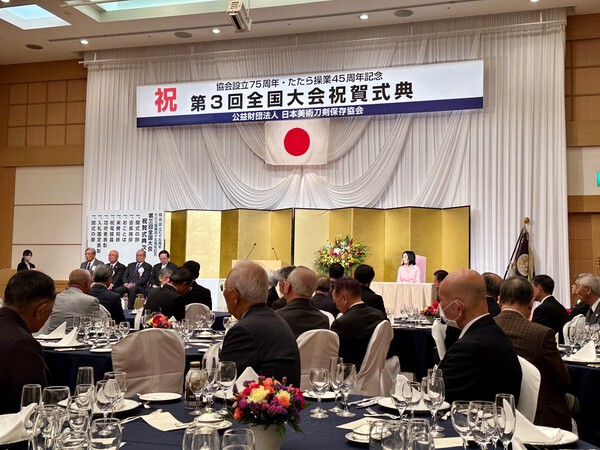-
Posts
1,926 -
Joined
-
Last visited
-
Days Won
22
Content Type
Profiles
Forums
Events
Store
Downloads
Gallery
Everything posted by Gakusee
-
Two points we need to consider: 1) swords are still “prohibited” (to be sent); 2) while the ban is clear as regards “sending”, it will be useful to understand if “receiving” in their Parcelforce clearance depot will be permitted. That is only pertinent for receiving swords from overseas and in case Parcelforce needs to do the customs clearance (which it usually does and processes import levies). If that is permitted, one can drive to the depot and collect the imported sword. But it needs to be verified.
-
Randell Make sure you spend some quality time with the armours. While Peter Janssen does have several very good / excellent swords, I would say the forte of the museum is armour and related accessories. There are 5-6 daimyo armours which are outstanding. You will know which ones as the light goes off automatically there to preserve the silk/colours. Also, the Maeda and Myochin uchidashi ones towards the middle of the museum are great, the small tea house diorama, etc etc. Not sure which swords will be exhibited, but look out for the various Rai, the excellent Ichimonji, etc swords.
-
Moriyama san, yes, thanks, but actually the year is already specified as 2022 in the middle of the number (04202209)? Is this not a repetition? What you say makes sense and also it indeed takes around 3 months for certificate issuance (submit in September and get the paper in December 2022).
-
Piers - let me double check please. So, from the certificate above I can see that it was submitted in the April 2022 shinsa and the certificate itself was issued in December 2022 (14 Dec Reiwa 4). Am I looking at the wrong photo as I do not think it was issued 3 months ago?
-
A value of a certificate issued by a reputable and trusted organisation in principle (without specifying organisations per se) lies in the implied assurance the reader draws that a panel of knowledgeable experts have examined the item. In most cases, these knowledgeable (usually Japanese) experts are much more adept and skilled than us here in the West and reputationally and empirically they are trusted. If you look at different organisations in Japan, in general they attest slightly different things. But a common denominator seems to be: - the item is authentic - of a certain (old) age - worthy of preservation Therefore to the user, the value lies in the assurance they are not buying eg, a plexiglass armour made yesterday or a gimei sword with blatantly wrong signature or a cast menuki that purports to be Goto yet was made in China. You will need to undertake a further study of the various certificate issuing authorities and I recommend you visit their websites (both Western branches and HQ Japanese branches) and use something like Google Translate to read what their certification actually means. After the initial take, then you ought to look at what it might mean if the certificate also mentions a signature which is on the certified item: - does the authority / panel agree with the signature - does it “authenticate” the signature and accept it or does it not Etc etc. This is where it becomes much more involved and interesting.
-
Dear Piers, thank you so much for entertaining us with these exciting stories. I hope your body recovers swiftly and the spirit is already high, I am sure, after the acquisition of these rare guns. Congratulations on pulling off these gems. I have also noticed some rare swords coming up lately - for sale or also being papered by the NBTHK. I however attribute this, as it is happening inJapan, not to tax reasons or the like, but simply to the ageing or demise of older collectors. Their collections are probably being dispersed by heirs or even the collectors themselves.
-
Somehow some elements of the sword do not seem congruent with Masamune but an in hand inspection is necessary.
-
Who attributed it to Masamune please? Thanks for letting me know.
-
However that blade is not on display. It needs to be requested.
-
Piers, please do share with us videos and share photos of your gunpowder exploits. I really love them! Thanks in advance
-
Bruce, I recommend you buy the Sesko e-book about the Honami family and read about that tradition of appraising and evaluating Japanese swords. It will help you understand how Japanese swords were viewed not only as weapons (as gunto were) but as spiritual objects, historical objects (the regalia passed down from Japanese deities), repositories of value (swords were given “gold coin” evaluations), elements signifying caste belonging, weapons, prizes and accolades for outstanding military feats of heroism, etc.
-
Big Jimmy in Antarctica, my name is in my signature:) By the way, why are you asking about that blade and how did you come across it? It is not well publicised or too widely known…. It is a very good Soshu den sword with very interesting activities and promise. It could be a Shizu or something of that ilk or even Masamune depending on polish. It bears a Kojo (one of most reputed Honami judges) kinzogan, but that kinzogan is a bit different from the typical Kojo kinzogan. To paraphrase Tanobe sensei, “it needs further study”. As far as I know, the sword has not been to Japan for shinsa. From our old records: Nagasa: 72.0 cm Moto-haba: 3.1 cm Saki-haba: 2.0 cm Sugata: Hon-zukuri, a graceful tori-zori, chu-kissaki, mitsu-mune. Jihada: A prominent and flowing itame-hada with mokume and abundant ji-nie forming chikei. Hamon: Fine nie-deki, notare-midare with some gunome like inclusions, profuse sunagaeshi which spills over into the ji in places and kinsuji. The boshi is slightly midare-komi with very little kaeri. Horimono: A bo-hi on both sides that finishes in the nakago between the two mekugi-ana. Nakago: Suriage by probably 3 or 4 cm and machi-okuri, 2 mekugi-ana. Kiri-jiri, faint kiri yasurime are just visible and the bo-hi finishes in a pointed end. There is kin-zogan mei on the sashi-omote MASAMUNE and on the sashi-ura HON-A with kao [KOJO]. This sword has a robust sugata that retains its elegance in spite of the suriage. Both the hamon and the jihada reflect the nie dominant hataraki, which together with the large itame- mokume- hada and mitsu- mune, associate the sword with old Soshu- den. The shape is both graceful and strong whilst the bo- hi provide the sword with a balance that makes it very easy to handle. It is in fine condition and all details are easy to see. Previously it was the property of Alfred Dobree, an active collector in the early 20th century, who donated it to the Victoria & Albert Museum in London.
-
No, he did not. He worked at the BM
-
Several of us have seen it
-
Luc, I tried to log in to the JAS forum using my credentials in the new pop-up box. I hope that is not some spoof as I input my actual log-ins
-
Curran with all due respect…. Different game between tsuba and swords and also completely different at high sword level. The kodogu shinsa experts are different from the sword experts and different people do the shinsa. And also the shinsa panel has been shrinking due to ill health and aging of the judges. We are down to two- three judges (and I heard the third one is unwell too). Hence the limits to submissions And so on and so on. So, folks, it is easy to criticise. It is not easy to design a sustainable and solid path forward. Not hypothetical, not idealistic (such as feed all certificates in an AI model and let it do the shinsa or out everything in a database for everyone to access on a global basis) but one that would work culturally, socially, morally and economically within Japan and in an old-fashioned body like the NBTHK. CF the attached photo of the recent 75 anniversary NBTHK symposium that I attended in 2023 and have a look at the NBTHK management (left of the podium) and the members. Draw your own conclusions about age, approach, appropriateness and so on.
-

Bonhams yesterday …wow!
Gakusee replied to Matsunoki's topic in Auctions and Online Sales or Sellers
Colin, apologies for being ambiguous: I meant koshirae and tsuba. I also agree with you that we should not argue about aesthetics here or personal tastes as these embody the Meiji era. -

Bonhams yesterday …wow!
Gakusee replied to Matsunoki's topic in Auctions and Online Sales or Sellers
The pieces are overall better than average. However, the condition of many was indeed compromised and there were various gimei items. Some of those that attracted very high prices were acquired at Juyo-level (ie mei verified, age verified, top quality and top condition assured) prices, when in fact they were not at that level. A couple of gems went unnoticed or went at reasonable prices. -
Thanks Piers. I will not hold too much hope regarding the timeline. They promised an opening last autumn. After 2-3 delays. Informally, they have been showing people around the museum and holding private viewings. Do you know what is delaying the public opening - is it some health & safety or some other regulations in relation to the exhibits (eg how Kokuho / JuBun etc are shown)
-
The reason is that they have business limits (in particular bottom thresholds) which they must meet if they are to register certain items and also to run certain auctions. So, often they tend to group items to meet these internal thresholds. Also there are thresholds which apply to the overall value / expectation for the auction as a whole (and there is a minimum there too). Finally, they make a judgement on what is a more desirable item and what is a less desirable item. If these two belong to the same collector, they might recommend to the seller to group the least desirable items with 1-2 more attractive items so that they are not left with unsold stock, relying on exactly what the original poster is complaining about - having to buy the whole lot.
-
I would add Chappelear’s intro and overview book - to me it is still a great reference about schools and mei. The Stibert Museum catalogue is both a catalogue of 100 or so great items but also overview of the main schools and the items are grouped according to these schools - for me (a katchu beginner), this is also a helpful book. Albeit more visual, there are nice descriptions. I wish Markus did an English version of his German publication but he is too busy…
-
Have you consulted Markus Sesko’s book on swordsmiths? Best to go on his website and purchase the electronic copy if you have not got it. I personally prefer Markus’s anthology to Hawley but people often refer to Hawley too.






